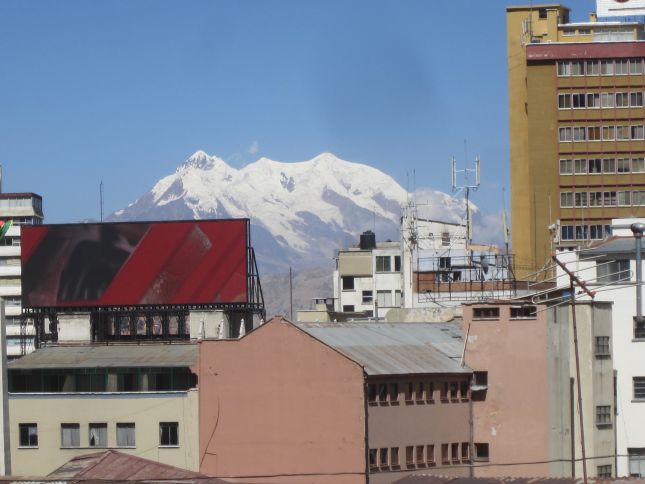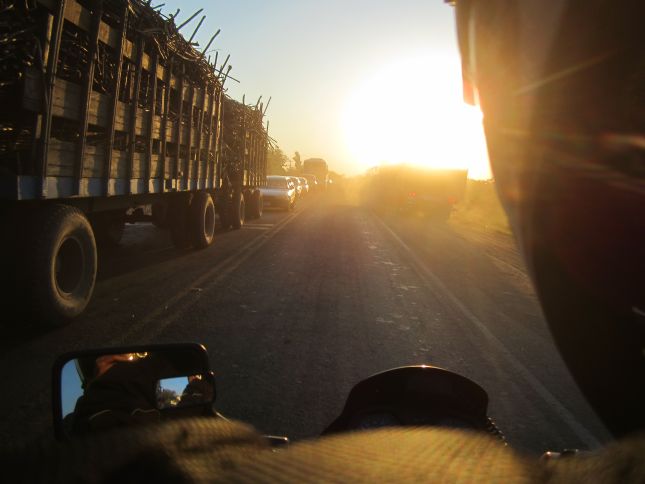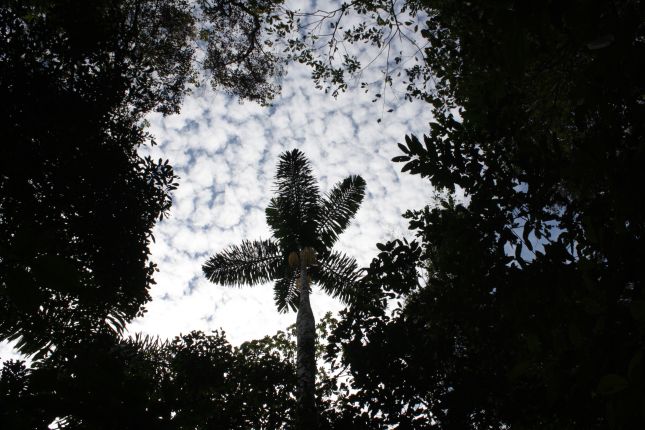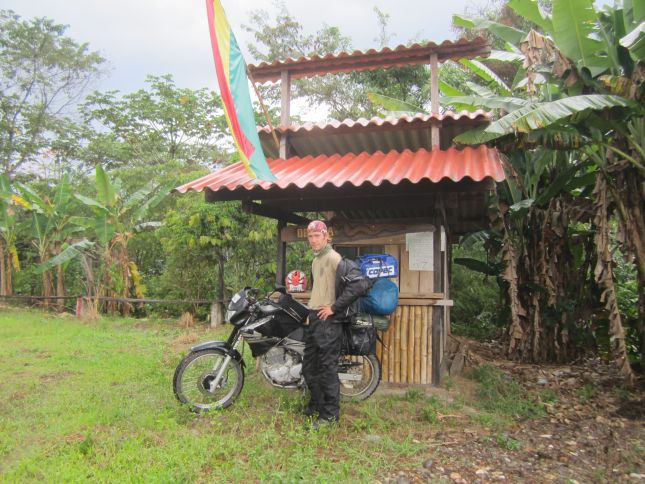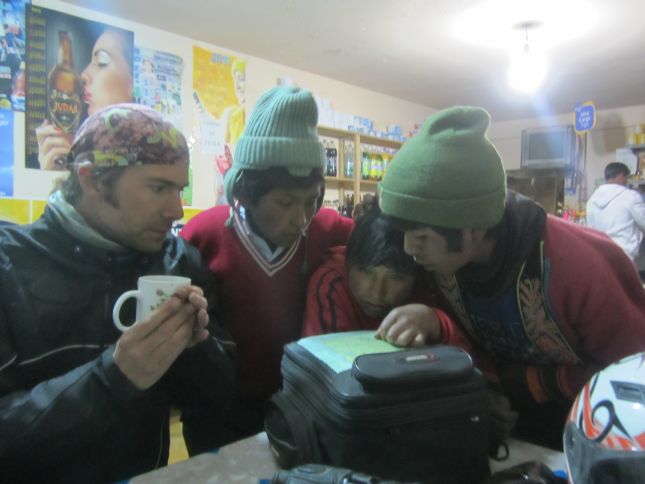
Lights at the End of a Long, Dark, COLD Tunnel – Oruro, Bolivia
TRIP INFO BOX |
|
| Route | Villa Tunari, Bolivia – Oruro, Bolivia (RN7,RN4,RN12) |
| Distance | 390Km |
| Travel Time | 10 hours (1/3 night driving) |
| Road Conditions | Tarmac |
| Weather | Clear, warm, very cold in highlands |
| Terrain | Flatland jungle to frezing altiplano |
| Food and Petrol | Frequent until after Cochabamba |
| Accommodation | Hotel Samay Wasi, Oruro |
UPDATE: I corrected the above distance, somehow I mistakenly put in 224Km earlier – apologies.
We say our final farewells to the Residencial America crew in Villa Tunari and ride off West. We don’t want to stay in Cochabamba on the way to Oruro so we plan to stay at any suitable looking town thereafter and continue to Oruro the next day. Unfortunately we find that there are no suitable-looking towns thereafter for us to lodge. Our journey to Cochabamba takes about 4 hours, we have a quick lunch there at the local Burger King (something we, as always, regret for hours afterwards), and then we continue SouthWestwards. We find one sort of lodge a few kilometres outside Cochabamba but for some reason they don’t seem to have anything available. So we continue.
After Cochabamba the road ascends. The valley of Cochabamba, about 2750m above sea level, disappears below us and we are greeted by the sights of a completely new level of mountains and valleys, just much higher up. The views are beautiful. Then it gets dark. And COLD.
The mountain roads here are desolate and winding, so we move at a slow pace, giving the cold plenty of opportunity to sink deep into our bones. Oruro is a city at about 3700m altitude and on the way there we have to cross a mountain pass around 4500m. It’s FREEZING!
At some point we arrive at a little village – Caramarca I think – with a toll gate. We stop so I can put on another layer under my trousers. Ebru’s so cold she looks like she’s going to cry. In one of the buildings there’s a restaurant so we park up and get inside. There are plenty of folks in there, mainly truck drivers also stopping in on the way. The old woman running the shop has some soup on the go. Thank goodness! Just what we need!
The soup and the following cup of tea gets the life back into us and we feel we can continue again. The lady is also selling red bull so I down one of them and take another for the road. A few local kids are very interested in our motorbike and accompanying attire. They’re all over it, trying out our stuff and saying all sorts of things we don’t understand. They find it all really exciting. It’s really cool to have encounters like this, these kids are so far removed from the life you and I are accustomed to it’s uncanny. But in the back of my mind I’m always worried they’ll get too over-excited and disappear with my gear. Oruro shouldn’t be too far now.
It takes us another two hours to get to Oruro. It’s a hairy ride, out here in the cold, dark, curvy roads of the Altiplano. At one point I am sure there’s something ahead of me and I slow down: when we get closer we find a broken down car with no lights or rear reflectors being pushed by two blokes, driver door wide open. Just the perfect setup to send an overtaking motorcyclist flying across the handle bars.
The approach to Oruro passes by the town of Caracollo, both of which are astounding sights, seen from a high point in the dark night. Thousands of yellow and orange lights, like a candle-lit church assembly – huddled together on a seemingly endless expanse of black in all directions. Oruro is a similar sight. Yellow stars below you and white ones above.
Finally we get to Oruro. The time is about 23:00 and the place looks dead. Using the map in the Lonely Planet and some directions from a petrol station attendant, we eventually find our way to a square near the bus terminal and find ourselves accommodation at the Hotel Samai Wasi (200BOB /dbl, ensuite, wifi, incl. breakfast). At 200BOB per night it’s more than double what we usually afford ourselves but we’re tired and need to settle into a place to rest asap.
After checking into the room, we head out across the road to a parilla restaurant. They’re apparently not serving food anymore at this hour, but there are still a few people in there and we just want to have a beer so they welcome us in. The beer goes down like mothers milk and after a couple of bottles we’re sated and ready for the piping hot shower awaiting us in our luxurious suite. It’s a dream! And the stiff white sheets on the firm mattresses on the beds provide us the therapeutic rest we need after such a harsh ride.
Sadly no other photos of our adventurous ride to Oruro exist as Ebru was loath to lose her fingers from frostbite in the icy altiplane winds, but we did get a few morning-time shots leaving the town. Oruro struck us as a pretty unremarkable and inhospitable town, the most remarkable thing about it being its “inhospitable-ness”, mainly due to its inhospitable situation. Life up here is no doubt hard.
